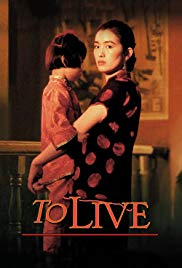Mao Zedong (1893 – 1976) became the leader of the Chinese Communist Party in 1942 and ruler of China from 1949 until his death. Mao was the subject of enormous veneration by the Chinese people, becoming a godlike figure. Chinese citizens were required to read and reread “Quotations of Chairman Mao” (called Mao’s Little Red Book). His writings were treated as infallible. His philosophy (called “Mao Zedong Thought”) was raised to the level of a religion.
Mao maintained his power in the same manner as any communist dictator, through repressing opposition to the Communist party and purging his opponents within the party. The political movements in China from 1950 – 1976, including “The Suppression of the Counter-Revolutionaries,” “The Great Leap Forward” and the “Cultural Revolution,” were all inspired and manipulated by Mao.
Mao’s infallibility did not last long after his death. His successor, Deng Xiaoping, while admitting that Mao had been one of the most influential men in Chinese history, criticized his mistakes in the Great Leap Forward and the Cultural Revolution. Deng Xiaoping then embarked on reforms of the Chinese economy which introduced capitalism and undid many of the changes wrought by Mao Zedong.
The Great Leap Forward began in 1958, after the success of China’s first five-year plan. The effort was to speed up industrialization at all costs. Poorly planned and poorly administered, the program collapsed. Chinese industrial production dropped as much as 50% between 1959 and 1962.
The Great Proletarian Cultural Revolution was launched by Mao and his supporters in 1966. Their purpose was to eradicate any remaining bourgeois influence and to recapture the zeal of the revolution. Mao also wanted to weaken his political opponents within the party and to destroy entrenched privilege in the party bureaucracy. Groups of students and workers organized themselves into the Red Guards, targeting anyone of privilege or accomplishment, including intellectuals, bureaucrats, party officials, urban workers, teachers, doctors etc. Tens of millions of people died. There was bloody fighting among various Red Guard factions and between Maoists and anti-Maoists. The economy was disrupted and education halted.
Arthur Miller, the great American playwright, wrote The Crucible about the Salem Witchcraft trials and, by analogy, the Red Scares of the late 1940s and early 1950s. An interesting parallel between this period of Chinese history and those periods of U.S. history is provided by this comment in Miller’s autobiography:
In Shanghai in 1980, [“The Crucible”] served as a metaphor for life under Mao and the Cultural Revolution, decades when accusation and enforced guilt ruled China and all but destroyed the last signs of intelligent life. The writer Nien Cheng, who had spent six and a half years in solitary confinement and whose daughter was murdered by the Red Guards, could not believe that a non-Chinese had written the play. “Some of the interrogations,” she said, “were precisely the same ones used on us in the Cultural Revolution.” It was chilling to realize what had never occurred to me until she mentioned it — that the tyranny of teenagers was almost identical in both instances. Timebends, A Life by Arthur Miller, page 348.


